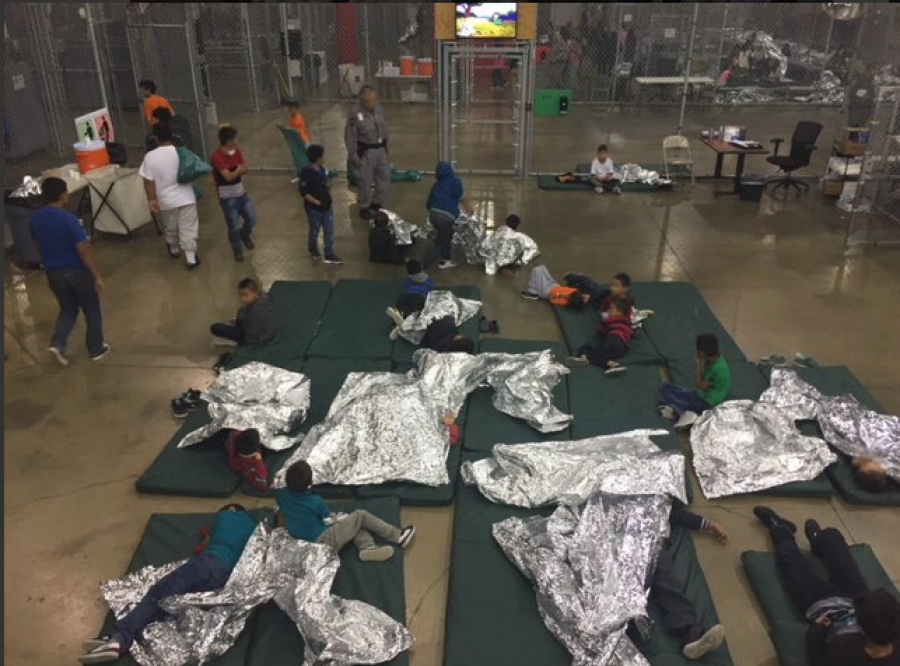
The United States has separated thousands of families who wished to immigrate. More than 500 children are now growing up without their parents. In the election campaign, this issue is just a side note.
545 children are missing their parents. A U.S. government measure and the fatal negligence of the responsible officials are to blame. Three years ago, the Department of Homeland Security began separating parents from their young children when they tried to cross the border between Mexico and the United States.
This so-called zero tolerance policy was meant to discourage people who, from Donald Trump’s point of view, were undesirable economic migrants. It then emerged that U.S. officials were taking thousands of children away from their relatives, including 2-year-olds and 3-year-olds. There were massive protests and the measures were suspended. Most children were able to be reunited with their families.
Yet in 2017, unnoticed by the public, the authorities went ahead and began to separate families. The children’s relatives were mostly fast tracked and deported back to their home countries. It is now emerging that officials evidently did not take care to collect the information required to find them again. The children remained in the U.S. Initially they were housed in camps and children’s homes, some were later placed in the care of foster families or other relatives in the U.S.
A judge ordered the government to commit to reuniting the families. The authorities had to pass the relevant documents on to the ACLU and Justice in Motion, so that they could attempt to track down the families in their home countries, such as Guatemala, El Salvador and Honduras.
That would have been a difficult task even if Trump’s officials had bothered to document everything thoroughly. In Guatemala, for example, many of the sought-after people live in remote areas, and few speak Spanish. Many who had fled violence and gang-related crime are living in hiding following their forced return. Some mothers and fathers who had to leave their children behind hope that, given the living conditions in their home country, their children will at least have a better future in the U.S.
Ultimately, COVID-19 has made the search in those countries almost impossible. Last week, representatives from the civil rights organizations reached an alarming conclusion: Out of the 1,500 children who stayed behind on their own in the U.S. as part of the “pilot program,” almost one-third have still not managed to contact their relatives. 545 children are living alone, separated from their parents.
The Children Hardly Play A Role in the Election Campaign
In the presidential debate last week, Joe Biden confronted the president over this issue. Trump explained that the children were well taken care of and lived in “facilities that were so clean.” He also said Obama built “cages” for migrants. What Trump calls “cages” are actually detention cells in which refugees and migrants were temporarily housed when picked up by border officials. They had to wait there up to 72 hours until their personal details were recorded and their applications for asylum submitted.
In fact, minors were also housed in camps and homes under Obama. Unlike with Trump’s “zero tolerance” policy, however, it was young people who had come over the border without relatives. Just like Trump, Obama cracked down on migrants. In his first three years in office, he had 1.18 million people deported — almost 400,000 more than Trump.
But the lower number of deportations does not mean that undocumented immigrants fare better under President Trump than under his predecessor. Many come from Central America seeking asylum. Therefore, the deportations are more difficult legally. Anyone who is arrested by Immigration and Customs Enforcement with no documents remains imprisoned until the process has been completed. It sometimes takes years for a judge to reach a decision. In the last year, half a million people were detained in 200 prisons, among them 70,000 children. More than ever before.
But, except for the short exchange of blows during the TV debate, migrants are not a big election issue this time. The pandemic dominates the headlines. Unlike in 2016, the debate revolves around masks, not the wall. The fate of the 545 children is just a quick note in the never-ending news stream.

Leave a Reply
You must be logged in to post a comment.